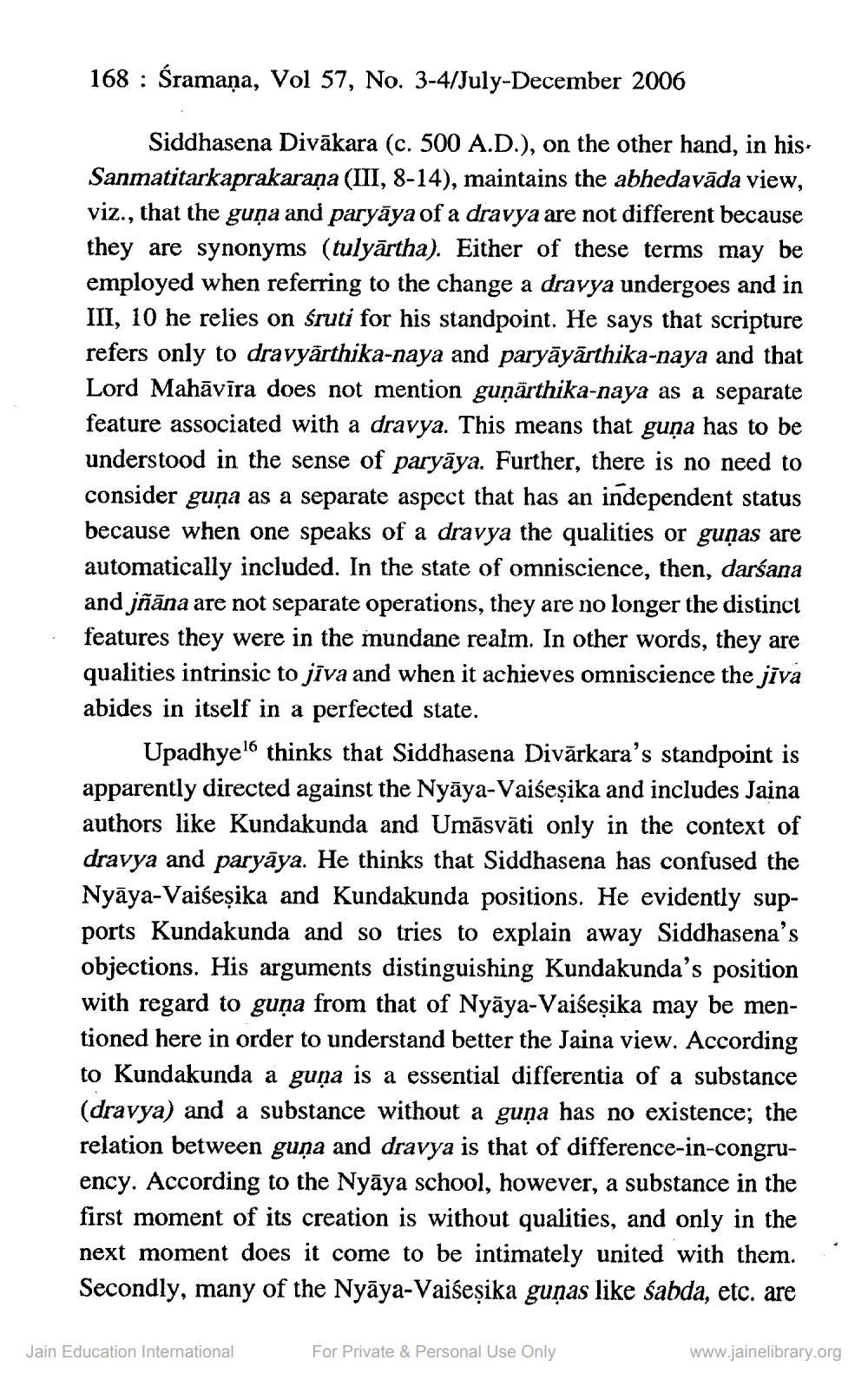________________
168 : Śramaņa, Vol 57, No. 3-4/July-December 2006
Siddhasena Divākara (c. 500 A.D.), on the other hand, in his Sanmatitarkaprakarana (III, 8-14), maintains the abhedavāda view, viz., that the guna and paryāya of a dravya are not different because they are synonyms (tulyārtha). Either of these terms may be employed when referring to the change a dravya undergoes and in III, 10 he relies on śruti for his standpoint. He says that scripture refers only to dravyārthika-naya and paryāyārthika-naya and that Lord Mahāvīra does not mention guņārthika-naya as a separate feature associated with a dravya. This means that guna has to be understood in the sense of paryāya. Further, there is no need to consider guņa as a separate aspect that has an independent status because when one speaks of a dravya the qualities or guņas are automatically included. In the state of omniscience, then, darśana and jñāna are not separate operations, they are no longer the distinct features they were in the mundane realm. In other words, they are qualities intrinsic to jīva and when it achieves omniscience the jiva abides in itself in a perfected state.
Upadhye16 thinks that Siddhasena Divārkara's standpoint is apparently directed against the Nyāya-Vaiseșika and includes Jaina authors like Kundakunda and Umāsvāti only in the context of dravya and paryāya. He thinks that Siddhasena has confused the Nyāya-Vaiấeșika and Kundakunda positions. He evidently supports Kundakunda and so tries to explain away Siddhasena's objections. His arguments distinguishing Kundakunda's position with regard to guņa from that of Nyāya-Vaiseșika may be mentioned here in order to understand better the Jaina view. According to Kundakunda a guņa is a essential differentia of a substance (dravya) and a substance without a guna has no existence; the relation between guna and dravya is that of difference-in-congruency. According to the Nyāya school, however, a substance in the first moment of its creation is without qualities, and only in the next moment does it come to be intimately united with them. Secondly, many of the Nyāya-Vaiseșika guņas like sabda, etc. are
Jain Education International
For Private & Personal Use Only
www.jainelibrary.org




